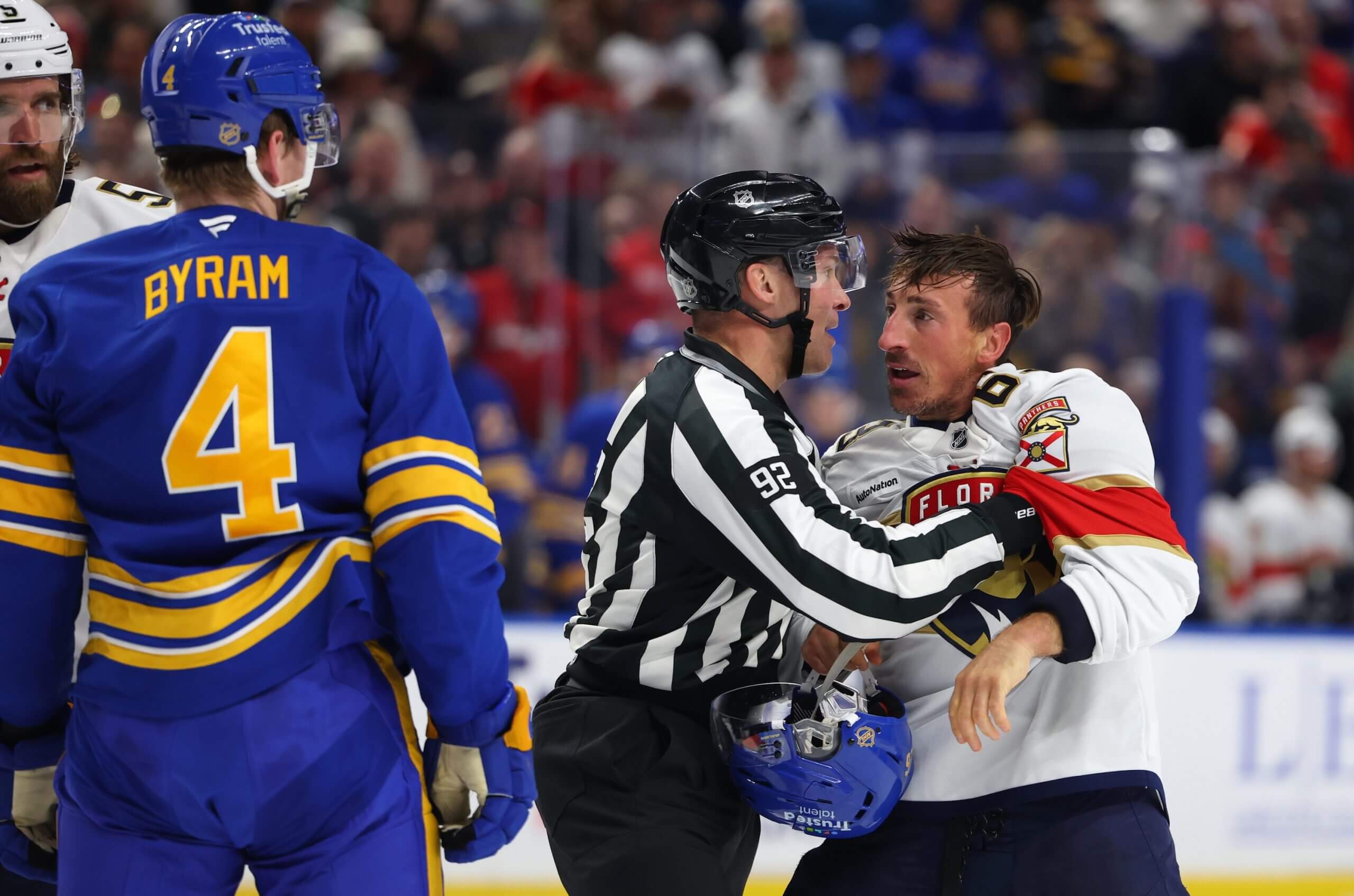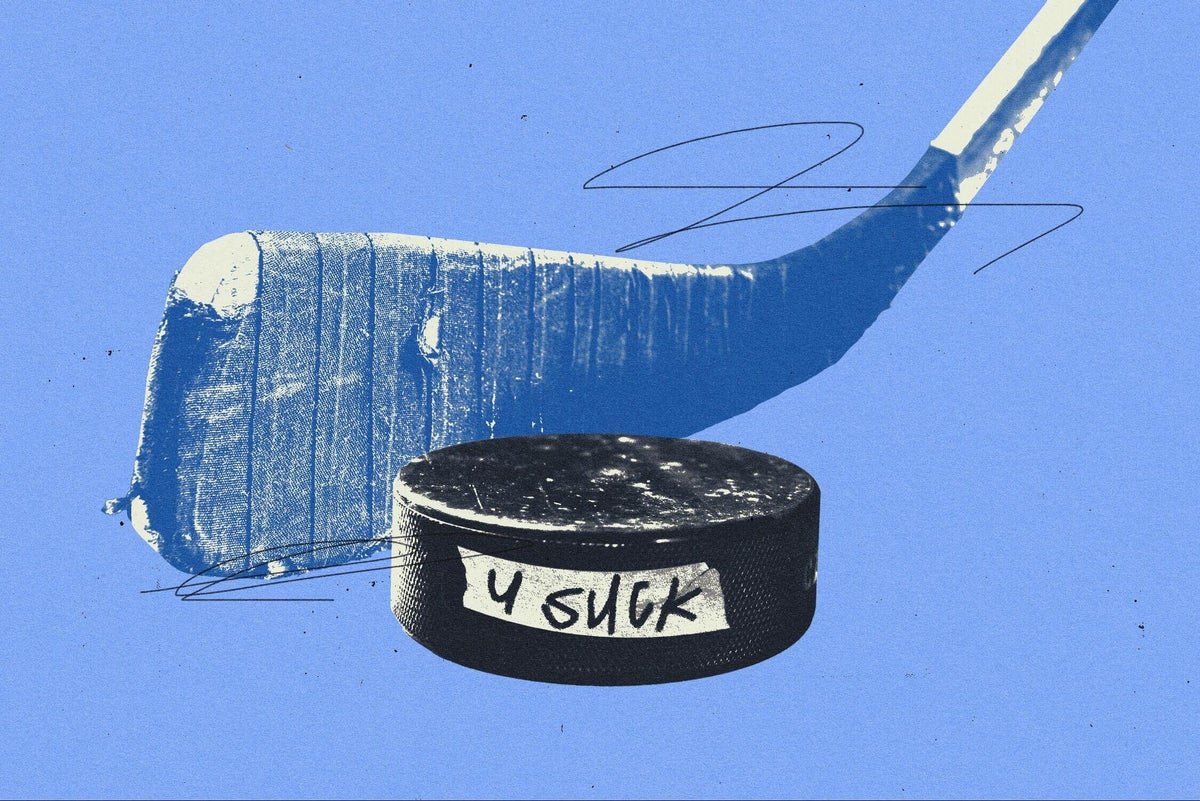Standing behind NHL benches for nearly 30 years, Florida Panthers coach Paul Maurice has heard players sling all types of trash talk on the ice. Or, as the practice is known in proper hockey parlance, chirping.
The verbal back-and-forth is viewed in the sport as an essential element of gamesmanship, an opportunity to gain a psychological edge through taunting, dissing, mocking, heckling or any other form of warbling that gets under an opponent’s skin. As the league has changed over time, though, Maurice believes the quality of its chirps have too and the practice has become a “lost art” in the NHL.
“They used to be really, really funny,” the two-time Stanley Cup winner told The Athletic. “Some of the chirps (today) are so bad. They’re so sad.”
Chirping was once so widespread throughout the NHL that its use wasn’t restricted to players. Veteran Montreal Canadiens forward Brendan Gallagher fondly recalled former coaches and even team trainers lobbing in-game smack earlier in his career. But today’s landscape looks — and sounds — much different.
As a rookie in the mid-2010s, Ottawa Senators forward Nick Cousins received a disparaging welcome to the league when enforcer Shawn Thornton approached him during a stoppage and chirped, “Next shift, just leave your stick on the bench because you don’t need it.” Over the decade-plus since, Cousins lamented, some players have become “too nice” to each other.
And he is far from alone in this observation.
“In the older era, it was a little more ruthless than it is now,” Calgary Flames forward Nazem Kadri said.
“There’s very little, if any, in the league now (compared to) when I first came in,” Panthers forward Matthew Tkachuk said.
Added Tkachuk’s teammate Brad Marchand: “Guys are way more sensitive now.”
Rob Ray accumulated more than 3,200 penalty minutes in his NHL career as an enforcer with the Buffalo Sabres and Senators in the 1990s and early 2000s. He also dished and received his fair share of chirps back when they were especially “vicious” and habitually went out of bounds.
“If you knew anything about an individual that most people wouldn’t know or was real personal,” said Ray, now the Sabres’ television color analyst. “(If) you knew he was going through something, there were no limits. You just let him have it.”
The league’s unwritten code has since added certain rules, namely that significant others and other family members are considered too personal of subjects for chirping. However, criticizing a player’s skills or appearance has always been fair game. Gallagher still remembers the line he dropped on one of the NHL’s premier trash-talkers, Marchand, then with the Boston Bruins, during a 2012-13 preseason tilt: “Oh, my God, your nose is even bigger in person than it is on TV.”
Other chirps tap hockey-specific slang for an assist, such as when Edmonton Oilers defenseman Darnell Nurse insulted then-Vancouver Canucks forward Adam Gaudette during the latter’s NHL debut in 2018.
“He yelled out at me — he’s like, ‘All right, you f—ing Schmelt, bring it,’” said Gaudette, now with the San Jose Sharks, recounting Nurse’s use of a term for a hated rookie popularized by “Letterkenny,” a Canadian show. “I was like ‘Oh, s—’, and I think I fired the puck off his ankle or something.”
Or when then-Philadelphia Flyers forward Claude Giroux once famously cooed like a pigeon — a literal chirp, with “pigeon” signifying a talentless, disrespected player — to slight the Toronto Maple Leafs’ James van Riemsdyk. In the case of Giroux, now with the Senators, the chatter often extended to his teammates during games.
“He never stopped talking,” said retired forward Wayne Simmonds, who played with Giroux in Philadelphia. “I don’t think he’s stopped talking yet. I can still hear him talking in my brain right now.”
Some players are blunter, taking their cues from Los Angeles Kings defenseman Drew Doughty’s viral chirp against then-Anaheim Ducks enforcer Pat Maroon during a 2014 outdoor game: “Buddy, you suck at hockey. You’ve been in the minors for how long?”
Speaking to The Athletic, Maroon commended Doughty for “always” having some good chirps in his arsenal.
“Being chirped is fun,” said Maroon, who retired from the NHL in March with three Stanley Cup championships. “And chirping back is funny.”
Other players, such as Seattle Kraken defenseman Brandon Montour, can take that recurring chirp in stride.
“(It’s) just an easy one that you know guys don’t obviously take serious because everyone in our league is pretty damn good at hockey,” Montour said.
But as New York Islanders forward Matthew Highmore noted, even this basic barb — Buddy, you suck — can sting.
“I don’t think a lot of guys like to use it because it does cut deep,” Highmore said. “I mean, sometimes it can be pretty ruthless. And that one, sometimes it rolls off your shoulders, and sometimes it hits you pretty hard.”
However, given the number of players approached for this story who opted to “keep it PG” in sharing specific chirps or declined to discuss the topic outright, two things are clear. First, that they likely get away with harsher in-game language than, say, NBA players, if only because of the muffling barrier of tempered glass panels that encase every rink. And second, that whatever is said between the boards generally stays there.
“The actions, the things that are said, your emotions, it’s one of the coolest things about hockey,” Marchand said. “A lot of people that don’t know the game or haven’t played would never understand.
“You definitely cannot repeat the things that are said on ice.”
If the NHL has indeed entered an era of excessively nice chirping, to paraphrase Cousins, several factors can help explain the shift, players said.
Omnipresent television and cellphone cameras at arenas, not to mention wireless microphones often worn for capturing league-sponsored content, have made them more cautious about what comes out of their mouths.
“I just keep it light,” Montour said.
“The last thing anybody wants is for something to go viral and get in trouble, for something that could be taken out of context,” Marchand said.
There’s also greater consideration of a younger generation of hockey fans.
“(Players are) like, ‘Oh, s—, I hope my kids don’t hear that,’” Utah Mammoth defenseman Nate Schmidt said. “That’s a big one.”
For the Panthers’ Tkachuk, the evolving archetypes of modern NHL players help explain the current state of chirping. When he entered the league with the Calgary Flames in 2016, he regularly faced “bigger, scarier” opponents with admirable gifts of gab. But as talent levels around the league have dramatically risen, with fewer places on rosters for enforcers, the caliber of trash talk has fallen off.
“As guys grow up and they’re the best players on their team and they’re built in a hockey lab, I think that there’s not as much game-within-the-game growing up anymore,” Tkachuk said. “I just think that players are different on how they make it. It’s all, majority, skill (players).”

Florida Panthers forward Brad Marchand has been recognized by many of his peers as one of the league’s best chirpers. (Timothy T. Ludwig / Imagn Images)
If any haven for chirping still exists, it is the Stanley Cup playoffs. According to TSN’s James Duthie, last season’s Stanley Cup Final rematch between Tkachuk’s Panthers and the Oilers was defined by instances of “pure verbal hate” in which “everything (was) on the table.”
“In the playoffs, it’s like no-holds-barred,” former Sabres and Panthers forward Kyle Okposo said. “It doesn’t matter. You’re just doing everything, anything, that you can to win, to get under anybody’s skin.”
Especially during the regular season, though, the preferred methods for entering opponents’ heads have changed. And some of the chirps you do hear, as Gallagher said, are “generic.”
“I think guys are a little bit more careful and a bit more focused on the game,” the Senators’ Giroux said.
But some players still seek to use chirping as a way to throw opponents off their game — as evidenced in a recent back-and-forth in which Senators captain Brady Tkachuk called Nashville Predators forward Michael McCarron a “fat f—.” Months earlier, Marchand even called an unnamed Sens player “so f—ing fat.”
“If it’s something about how they look or how they’re playing, something like that that irritates them, it’s still going to be effective without crossing any personal lines,” Kraken forward Tye Kartye said.
And for a select few, the practice helps improve their focus on the ice.
“Sometimes there’s nights where I don’t feel like engaging and guys come after me,” Marchand said. “And it drags (me) into the game. I think that’s one of the things that I get from it. It gets you mentally engaged in the game and allows me to focus more sometimes. But that could work against you, too, if you don’t keep your mind in the right spot.”
Thanks to the likes of Marchand, Gallagher, the Tkachuks and others carrying on the supposedly dying art, it seems unlikely that chirping will ever disappear altogether, no matter how little is heard at some NHL games these days. Even so, there is no denying the shifting cultural winds. Just ask Ray.
Ray was once en route to an NHL alumni event when he ran into a pair of ex-opponents, Darcy Tucker and Shayne Corson. Seeing his fellow retired players, Ray was instantly transported back to when his on-ice chirps toward them had, in hindsight, gone too far.
During a January 2001 game in Toronto, Ray reportedly delivered an insult you wouldn’t “repeat in public” about Corson in the midst of a fight with Tucker, Corson’s teammate and brother-in-law. Even after Ray and Tucker were thrown out of the game, Tucker tried to chirp back at Ray outside the Sabres’ dressing room and was eventually restrained by teammates and security.
So, when Ray encountered both men, his heart sank. “Ahhh, son of a b—-,” he thought. He could’ve ducked Tucker and Corson. Or, perhaps, he could’ve doubled down and insulted them again.
Instead, he approached them and apologized.
